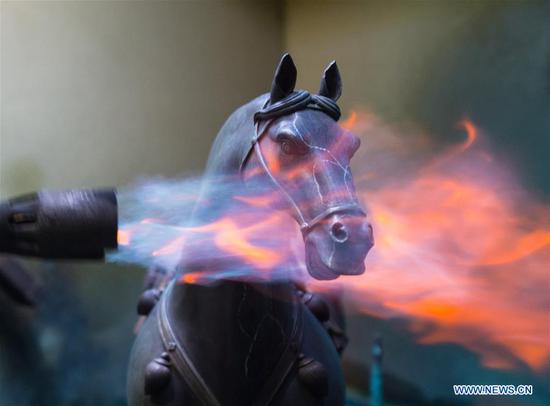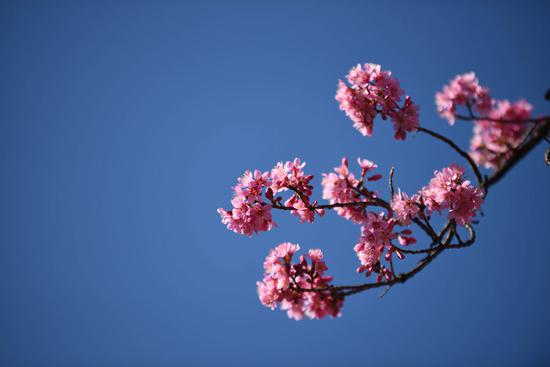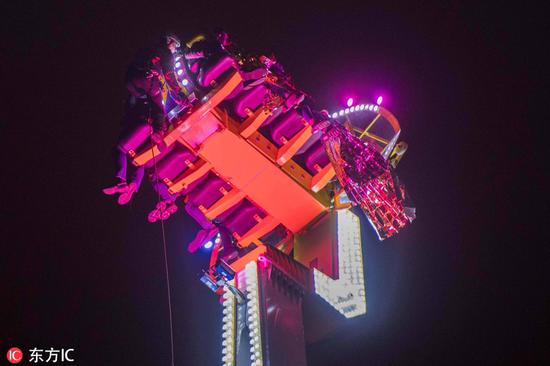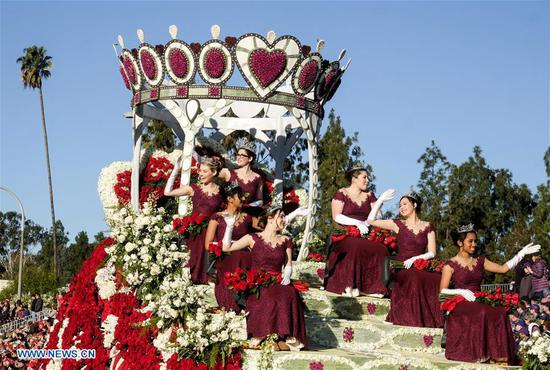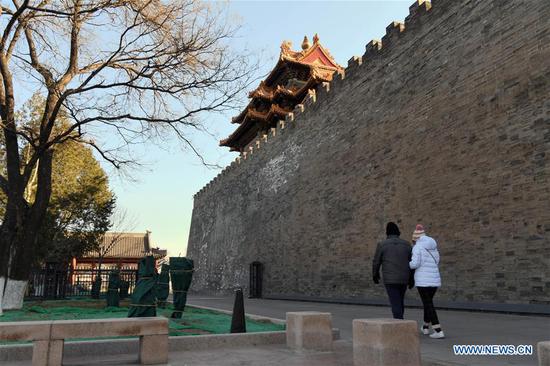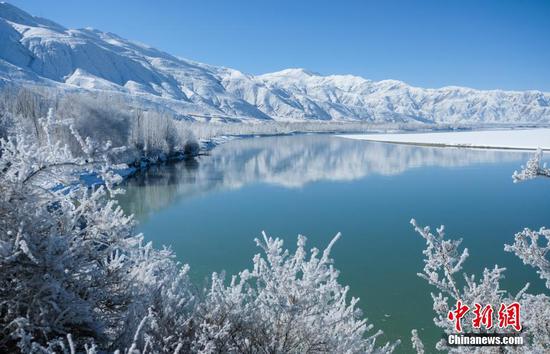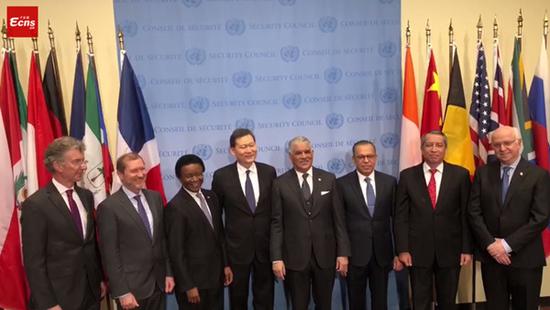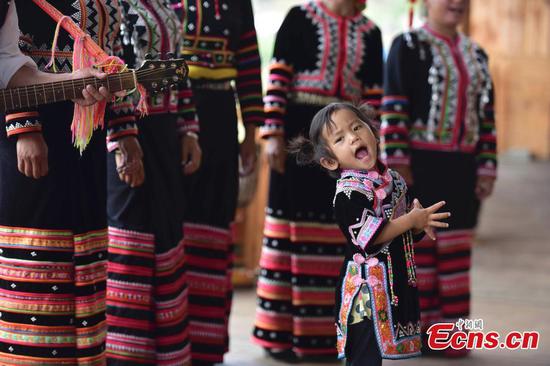
A girl of the Lahu ethnic group sings in Laodabao Village, Lancang County, Southwest China’s Yunnan Province, May 26, 2016. Although without professional training in music, Lahu people there have natural talents for singing and dancing, which has attracted many tourists. (Photo: China News Service/Liu Ranyang)
Southwest China's Yunnan Province on Tuesday published a dictionary to preserve the culture of Lahu nationality, a minor ethnic group with a population of 486,000.
"Dictionaries on Chinese Ethnic Minorities - Lahu Volumes" collect social, geographical, historical, philosophical and religious texts and files of the Lahu.
Boasting a long history and excellent traditional culture, the Lahu nationality doesn't have its own written language. Literature documents about the Lahu are also scarce.
"The premiere of the dictionary can be seen as a major landmark in saving and inheriting the culture of Lahu," said Liu Jinrong, a professor with the Yunnan Minzu University, and chief editor of the two volumes on Lahu.
The Lahu people mainly live in Pu'er and Lincang cities and the Xishuangbanna Dai Autonomous Prefecture, according to the sixth national census in 2010.
After the founding of the People's Republic of China, the living conditions of the Lahu people have been greatly improved, with government support regarding housing and infrastructure, including road and telecommunication, said Liu.
The "Dictionaries on Chinese Ethnic Minorities," launched in 1992, is a national project to protect the cultures of 55 ethnic minorities in the country. Planned as one set of volumes for one ethnic group, the project aims at introducing the culture of all 55 ethnic groups in China in an accurate and systematic way. So far, it has finished the composition for ethnic groups like Wa, Dai, Jing, Naxi, Yi, Hani, Bai, and Zhuang.












